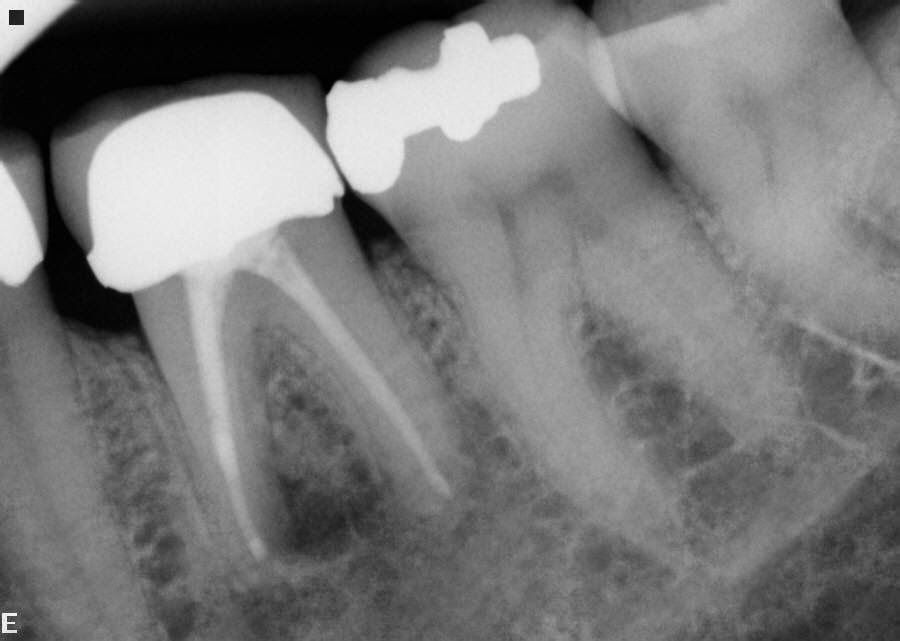 |
| Pre operative x-ray #4 |
Patient was symptomatic.
 |
| Post operative x-ray #4 |
Note: Two lateral canals and curvature negotiated and obturated.
Comments: When contemplating root canal therapy on any tooth, curvatures can be problematic. It is an ideal place for instruments to separate when the canal system is really small, this is a case that should be referred. It was fortunate in this case the lateral canals were filled and a radial lucency can clearly be seen on a mesial aspect of this root.















































